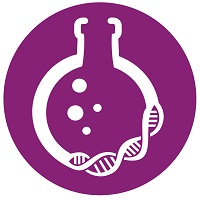Bioanalytics
Symposium: Using Mass Spec to Support PD/PK
MS and Stable-Isotope Kinetic Methods for Target Biology & Biomarker Strategies
Tuesday, November 11, 2025
10:00 AM - 10:30 AM CT
Location: 221 CD

Stephen F. Previs, PhD
Senior Director, Pharmaceutical Science
PharmaCadence Analytical Services, LLC
Hatfield, Pennsylvania
Speaker(s)
Mass spectrometry (MS) analyses can be used to identify unknowns, understand binding interactions, follow drug metabolism (pharmacokinetics) and track changes in target biology (pharmacodynamics). The latter may be readily studied when coupled with stable isotope tracers to detect isotope flux and study in vitro and in vivo kinetics.
Workflows that integrate the use of isotope flux (i) generate knowledge related to the turnover of endogenous species, which informs on the use of “static” biomarkers, (ii) can reveal unknown connections between pathways, which informs on unexpected outcomes and (iii) can be used to justify modality selection and/or guide optimization. The role for isotope-based qMS studies becomes most apparent as investigations move from cell-free to cell- or in vivo biology systems, in evaluating compound efficacy and elucidating target biology. This yields novel insight for the biology team while setting a foundation for screening and pharmacology groups to use when building in vitro-in vivo correlations and/or explaining unexpected outcomes. Likewise, discovery teams can typically (forward) translate the use of stable isotope flux in clinical investigations.
Whereas one can readily measure the concentration of an endogenous analyte, the ability to explain an underlying mechanism(s) responsible for its change is of significant advantage to research outcomes. Using case studies, we demonstrate why pathway activity should be studied during target identification/validation and why the execution of isotope tracer studies requires deep expertise that comes from integration of knowledge in bioanalyses, physiology and mathematical modeling.
Workflows that integrate the use of isotope flux (i) generate knowledge related to the turnover of endogenous species, which informs on the use of “static” biomarkers, (ii) can reveal unknown connections between pathways, which informs on unexpected outcomes and (iii) can be used to justify modality selection and/or guide optimization. The role for isotope-based qMS studies becomes most apparent as investigations move from cell-free to cell- or in vivo biology systems, in evaluating compound efficacy and elucidating target biology. This yields novel insight for the biology team while setting a foundation for screening and pharmacology groups to use when building in vitro-in vivo correlations and/or explaining unexpected outcomes. Likewise, discovery teams can typically (forward) translate the use of stable isotope flux in clinical investigations.
Whereas one can readily measure the concentration of an endogenous analyte, the ability to explain an underlying mechanism(s) responsible for its change is of significant advantage to research outcomes. Using case studies, we demonstrate why pathway activity should be studied during target identification/validation and why the execution of isotope tracer studies requires deep expertise that comes from integration of knowledge in bioanalyses, physiology and mathematical modeling.
Learning Objectives:
- Use mass spectrometry and stable isotope tracer studies to (i) quantify a biomarker’s half-life, (ii) differentiate the source of the biomarker pool, and (iii) define pathway activity
- Understand the importance of these resource sparing methods
- Apply the methods to approaches that permit studies which can be run in subjects who are not confined to clinical units

